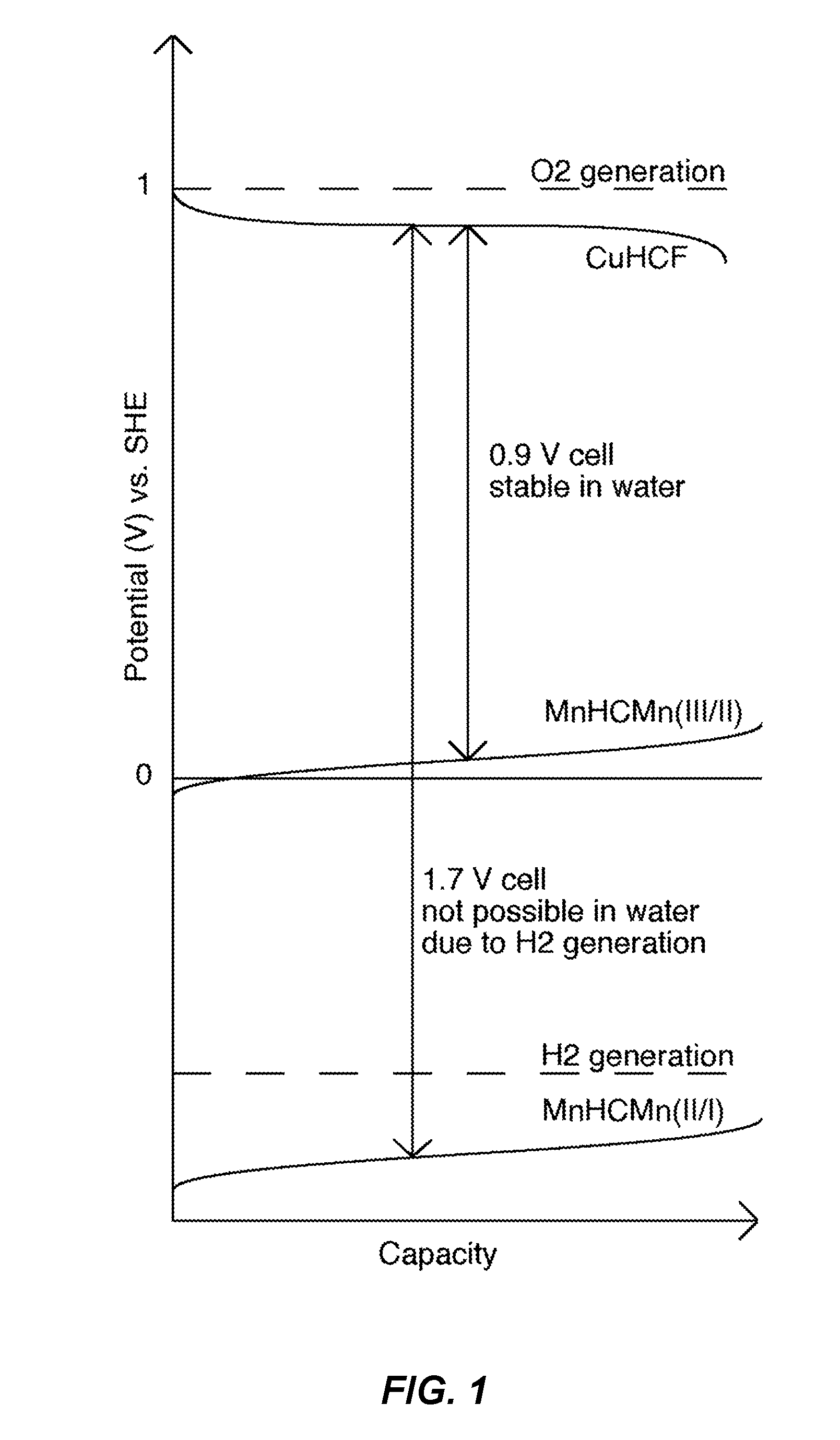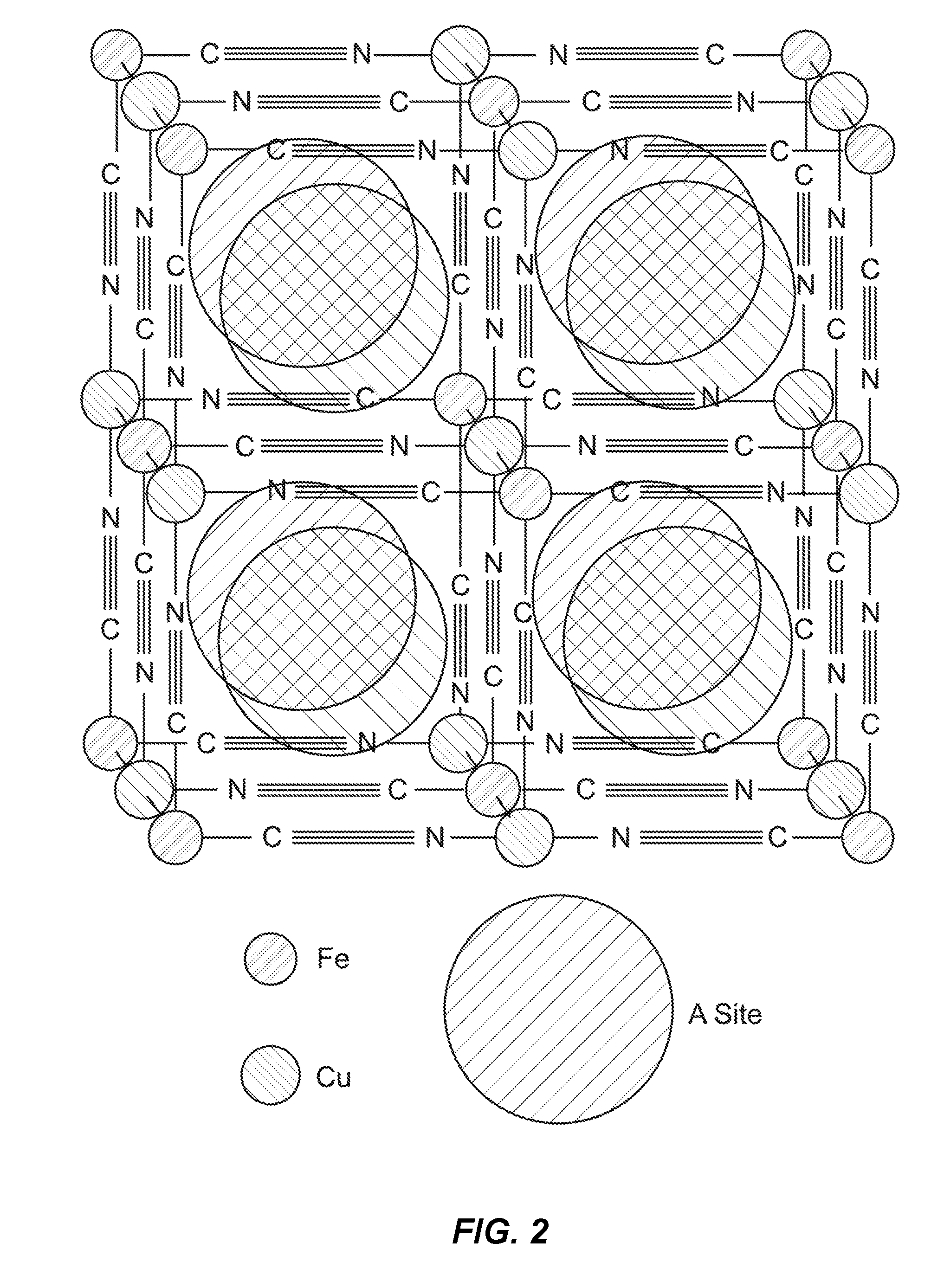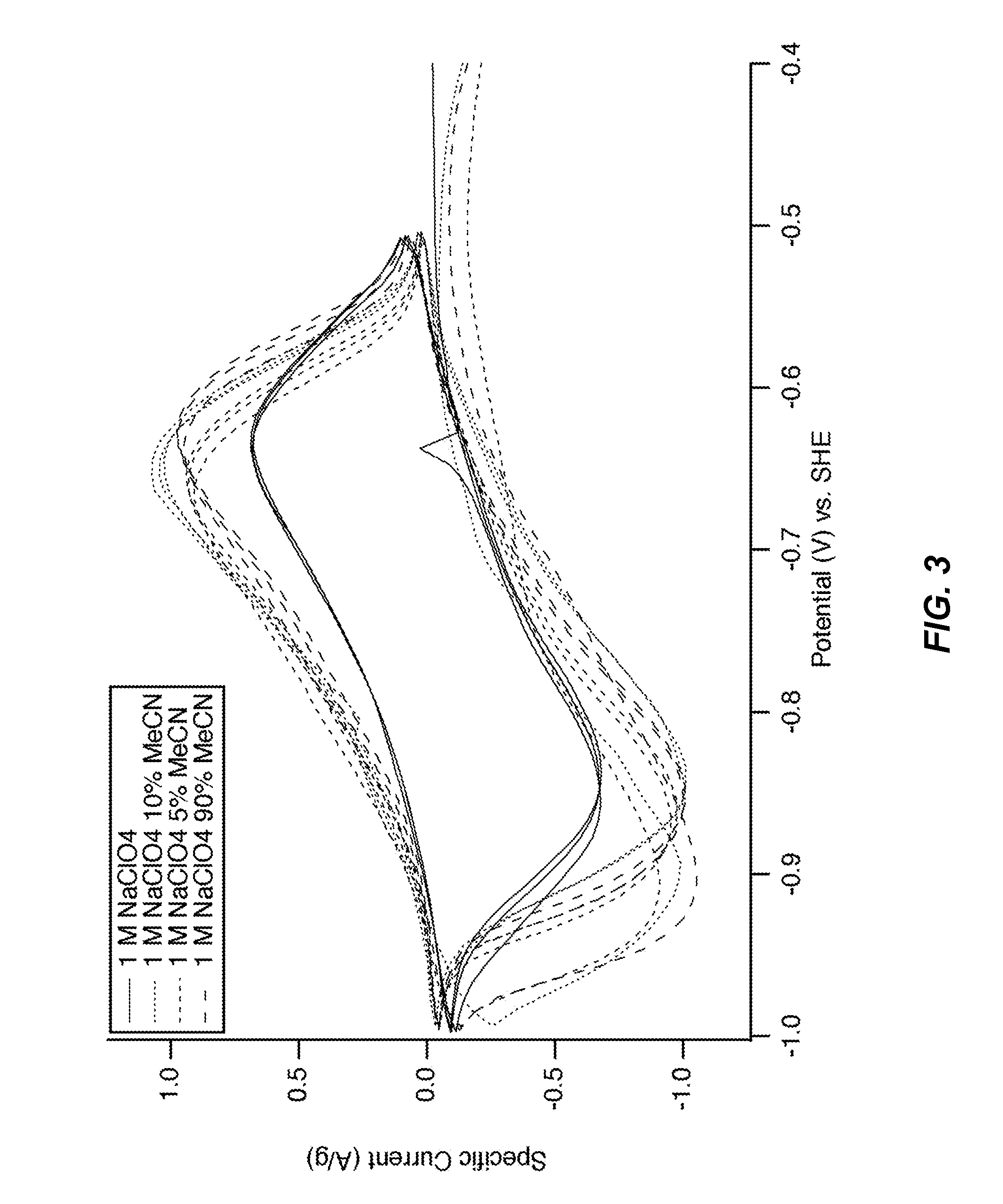Cosolvent electrolytes for electrochemical devices
a liquid electrolyte and electrochemical technology, applied in secondary cells, battery service/maintenance, cell components, etc., can solve the problems of poor cycle and calendar life, low energy efficiency during rapid cycling, and high cost, so as to improve the solubility and stability of materials, slow or prevent the dissolution and/or hydrolysis of tmccc electrodes, and high efficiency operation
- Summary
- Abstract
- Description
- Claims
- Application Information
AI Technical Summary
Benefits of technology
Problems solved by technology
Method used
Image
Examples
example 1
[0107]A MnHCMn electrode was disposed in a half cell in the configuration described above and operated by cyclic voltammetry. The reaction potentials of the reactions of MnHCMn with 1 M Na+ were found to be about −0.76 V and 0.04 V vs. SHE. The potential of the lower reaction of MnHCMn varied only slightly with the addition of MeCN to the electrolyte, from 0% MeCN to 95% MeCN (FIG. 3-4). The magnitude and sign of the small shift in reaction potential showed no trend with MeCN concentration (FIG. 3).). Furthermore, MnHCMn was found to cycle reversibly in 95% MeCN at with Na+ salt concentrations of both 1 M and 1.4 M.
example 2
[0108]A MnHCMn electrode was disposed in a half cell in the configuration described above and operated by cyclic voltammetry. MnHCMn was found to cycle reversibly in cosolvent electrolytes containing water as a minority cosolvent comprising 5% of the total solvent volume, and with equal quantities of MeCN and a second organic cosolvent comprising the remaining 95% of the total solvent volume (FIG. 5-6). These second organic cosolvents were one of: sulfolane, propylene glycol monoethyl ether, hydroxypropionitrile, gamma-valerolactone, ethylene carbonate, dimethyl carbonate, and 1,3-dioxolane. In these example electrolytes, the solvent volume of MeCN is as little as 10%, with another primary organic cosolvent such as propylene carbonate comprising 85% solvent volume. These electrolyte compositions of matter demonstrate the use of multiple organic cosolvents in combination with water as a minority cosolvent.
example 3
[0109]A MnHCMn electrode was disposed in a half cell in the configuration described above and operated by cyclic voltammetry. Over 55 mAh / g of specific discharge capacity was achieved for the lower reaction of MnHCMn in a cosolvent electrolyte of 1 M NaClO4 in 90% MeCN and 10% water (FIG. 7) This is comparable to the 50-60 mAh / g capacities typically achieved for the upper reaction of MnHCMn at 0.05 V in aqueous electrolytes. With no loss in specific capacity of the anode, but a gain in full cell voltage of about 0.8 V, full cells that operate by using the lower reaction of MnHCMn will have nearly double the energy of those that operate by using the upper reaction of MnHCMn, with the same electrode materials (and associated costs). This makes the use of the lower reaction, and therefore, the use of a cosolvent electrolyte, critically important to the economics and viability of the battery.
PUM
| Property | Measurement | Unit |
|---|---|---|
| cell voltage | aaaaa | aaaaa |
| cell voltage | aaaaa | aaaaa |
| current | aaaaa | aaaaa |
Abstract
Description
Claims
Application Information
 Login to View More
Login to View More - R&D
- Intellectual Property
- Life Sciences
- Materials
- Tech Scout
- Unparalleled Data Quality
- Higher Quality Content
- 60% Fewer Hallucinations
Browse by: Latest US Patents, China's latest patents, Technical Efficacy Thesaurus, Application Domain, Technology Topic, Popular Technical Reports.
© 2025 PatSnap. All rights reserved.Legal|Privacy policy|Modern Slavery Act Transparency Statement|Sitemap|About US| Contact US: help@patsnap.com



